
Volunteers of Operation 'No Release' will be keeping a close watch in nature reserves this month to prevent the illegal release of exotic animals, a practice conducted for Vesak celebrations every year.
The custom is believed to promote good karma as releasing an animal into the wild is seen as a benevolent act.
However, many people do not realise that these animals are unlikely to survive in natural habitats and may even threaten to affect the ecological balance of the environment they are released into, says Nature Trekker Singapore, organiser of the operation.
As a result, the act of releasing animals into nature reserves is prohibited under the Parks and Trees Act (2005).
Operation 'No Release' will be conducted in the last two weekends of May this year with the help of volunteers.
A representative of Nature Trekker Singapore says:
"Every year in May during Vesak, you will notice people releasing exotic animals such as tortoises, birds and fishes into the wild.
"This practice of release is considered an offence under the Parks & Trees Act 2005.
"The people who release these animals believe that it is good karma.
"Although we have no doubt that the intention to release exotic animals into the wild is a good deed and a kind act, the flipside is that the animal may either not able to survive on their own or if it does, could become a threat to naturally wild animals due to competition for food.
"If that happens, it would inevitably upset the ecological balance and affect the overall biodiversity of our ecosystem.
"Examples of past exotic animals been released are the exotic red-eared terrapins, which can be found in most of the reservoirs and ponds in Singapore. Some of the exotic animals released are aggressive in nature, such as the American Bullfrog which feeds on smaller animal species.
"Therefore, it is our duty to continue to protect and save our local wildlife through the organizing of No Release.
"The operation seeks to stop people from releasing exotic animals into our nature reserves and reservoirs.
"According to statistics, there were 44 recorded cases of releasing or attempts to release wild exotic animals in 2004. The number has increased over time.
"This year alone, between the months of March and April, eight bags of crickets, four bags of goldfish, four bags of swordtail and four bags of guppies were reported to have been nearly released at MacRitchie Reservoir. Another 70 birds were released in Dairy Farm Nature Park".
Interested volunteers can contact Nature Trekker Singapore.
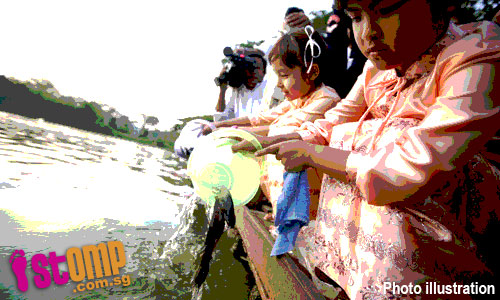
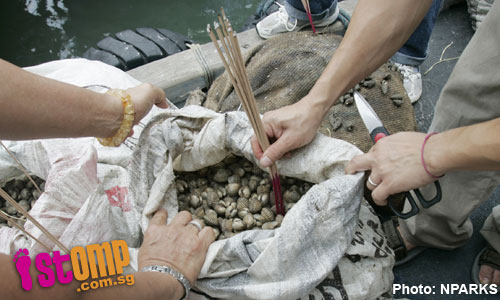
Operation No Release is being carried out in collaboration with the National Parks Board (NParks). People who are interested in volunteering can sign up at this link.
Last Friday, many volunteers attended a Leafmonkey workshop on Operation No Release, facilitated by Karen Teo from NParks. We shared and discussed the issue of animal release, as well as possible measures to tackle this problem. In recent years, the problem seems to be growing, and we really need to raise awareness about this issue.
Indeed, the act of mercy release is often carried out without any real consideration for the animals' welfare, or for the health of the ecosystems in which these animals are released. I have witnessed firsthand the effects of animal liberation on 2 occasions.
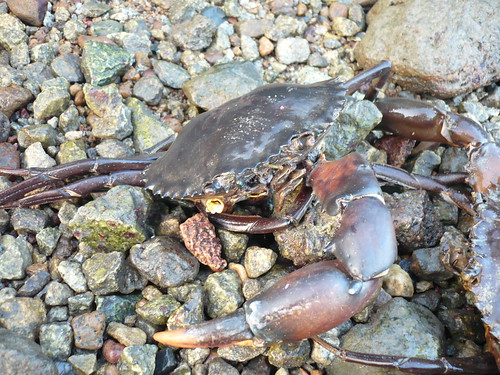
The first was in May 2008, when for some strange reason, a large number of dead mud crabs (Scylla spp.) were found on a stretch of rocky shore in Changi. I counted a total of 12 dead mud crabs along a small stretch of shore, below the Changi Boardwalk. Given that this was not typical mud crab habitat, and that it was just after Vesak Day that year, it was likely that this was the result of an attempt to release the crabs.
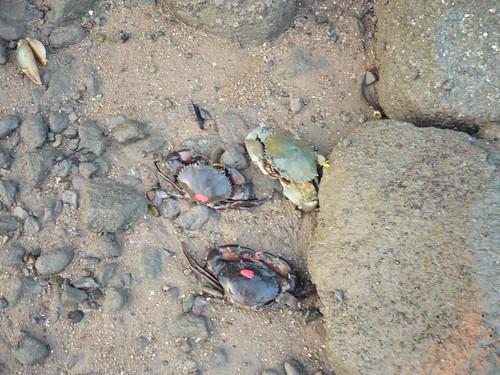
In February 2009, I was exploring Tanah Merah when I stumbled upon an even larger number of dead mud crabs.
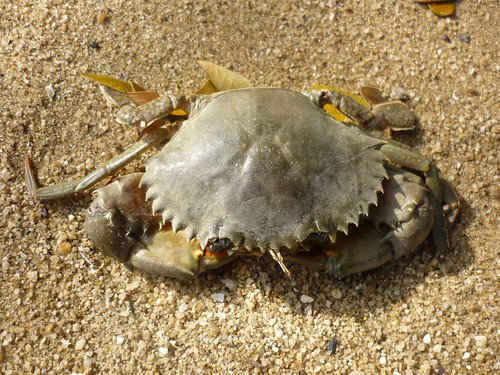
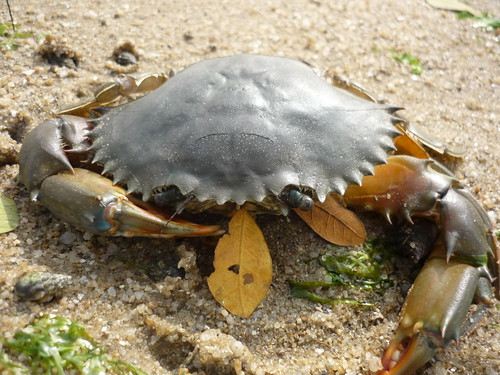
I counted at least 12 dead and dying mud crabs before giving up.
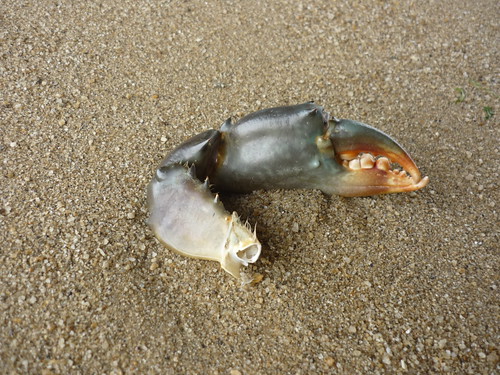
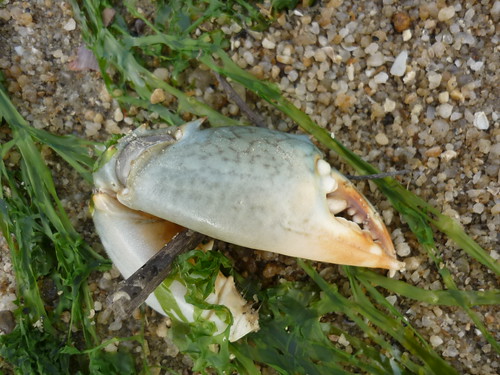
And that's not including all the disembodied pincers I found as well.
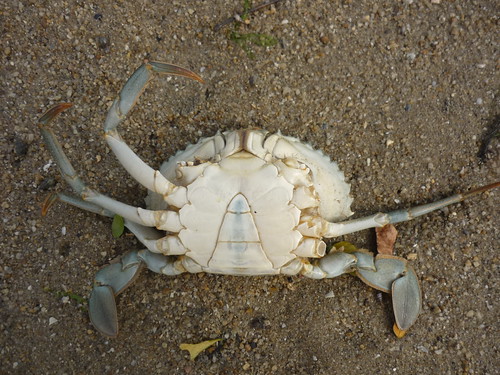
Many of these dead crabs were missing legs and pincers.

This crab was still alive (albeit it seemed to be dying), and it had a major crack on its carapace.
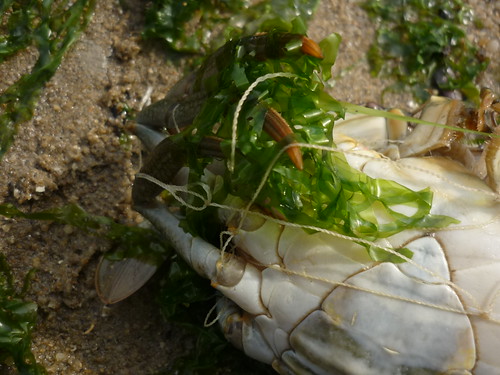
It was tangled up in a bit of netting when I had first found it.
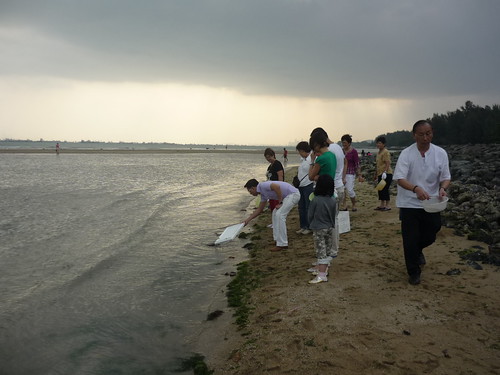
It became clear as to where all these crabs were coming from. A group of people carrying a large styrofoam box were merrily releasing more crabs into the sea nearby.
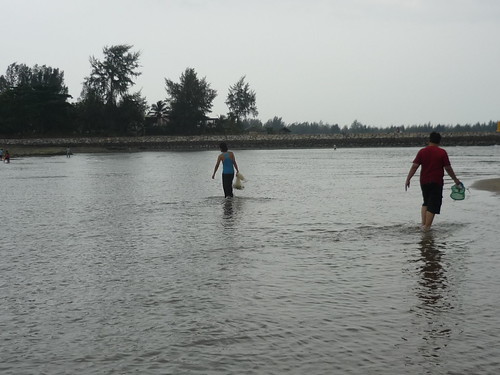
Ironically, all around them were people merrily gathering crabs, probably including the mud crabs that the group had just liberated.
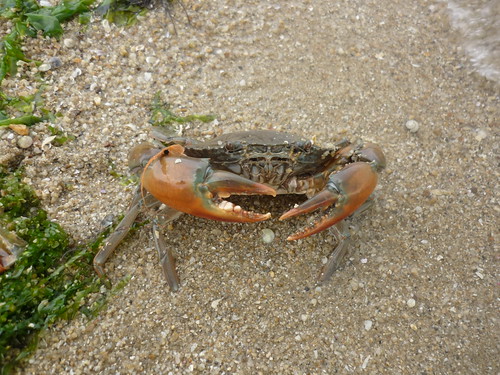
After the group had left, I went over and found a couple of live crabs that still had some of their legs tied together with raffia string. I carefully tugged at the strings until they came loose and the crabs finally scuttled off into the sea.
Mercy release is an activity that is of questionable value to the animals themselves, especially considering the fact that many of them are already not in the best of health and are forced to go through the stress of transport, and don't survive to be released in the first place. During the workshop, Karen mentioned the bag full of dead quail that was retrieved in one of our nature reserves a few years ago.
Even if the animals live long enough to be released, many of these animals are subsequently released in the wrong habitat, in less than optimal conditions. To make matters worse, especially in the case of birds, many of these animals are captured solely for the purpose of being sold to be released. In some cases, these birds are subsequently recaptured and go through the stress of the process all over again. Needless to say, casualties are heavy.
Unfortunately, the grim consequences are not witnessed by the misguided people who believe that they are doing good.
How does this benefit the animals that have been released? Does the suffering of a vast majority justify whatever benefits enjoyed by those animals that manage to survive for some time after release?
And what about the ecosystems into which these animals are liberated? This so-called act of mercy only helps to boost the numbers of non-native species such as American bullfrog (Lithobates catesbeianus) and Chinese softshell turtle (Pelodiscus sinensis), with negative impacts on native species. Animal liberation helps in the spread of introduced species, helping them to colonise new areas which may be the last refuge for many of our endangered fauna and flora. Whether it is by predation, competition for resources, or even introduction of disease, these introduced species further threaten the health and stability of our fragile ecosystems.
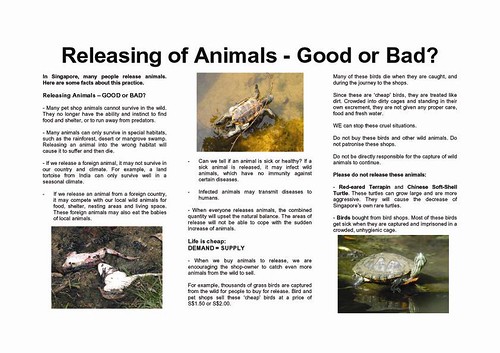
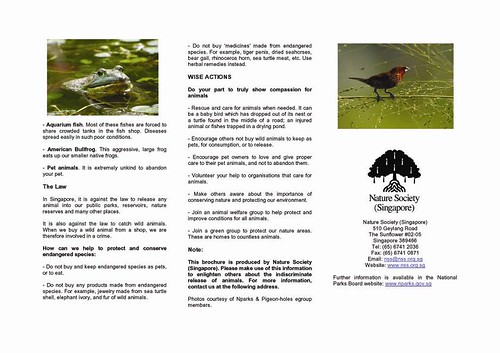
Releasing of Animals - Good or Bad? by the Nature Society (Singapore)
I am not one to comment on the idea of doing good deeds to gain karma, but I do strongly feel that there are many other activities to show that one genuinely cares about the welfare of animals. To me, animal liberation has become cheapened, blindly followed by people who ought to know better and understand the implications of their actions. It has become a purely symbolic act that apparently is more for personal gain and satisfaction, rather than doing a genuine good deed for another living being.
Dumping and abandonment of unwanted pets is one thing, and while the motivations behind such actions are different from those behind mercy release, they both share 1 thing in common: these are acts of great irresponsibility. Irresponsibility towards the welfare of the animals being liberated, and irresponsibility towards the health and integrity of our ecosystems. To me, the group that releases a group of American bullfrog into a stream in a nature reserve is no better than the negligent owner who dumps his pet rabbit in the neighbourhood park.
Here are more blog posts and articles about this problem:
Help stop cruel "Animal Liberation" - volunteers needed
Vesak Day and "Animal Liberation" on our shores
Operation No Release
Signs of ignorance
Release me not...
The Wretched Act of Animal Release
Animal release
Vesak Day appeal: Don't abandon animals, adopt a pet or go vegetarian
Abandon me not
Animal releases on Vesak Day 2004